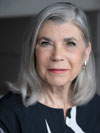 |
| Philip Seymour Hoffman, second from left, in a scene from A Late Quartet. |
I am also reminded of a more recent event - a concert in Paris that triggered memories of A Last Quartet and its subtle and perceptive portrayal of four individuals trying to sustain a creative unison whilst beset with uncertainty, loyalty and passion. It is Saturday evening in Paris, in early December. We emerge from the Metro into the chill air, the Arc de Triomphe glowing heroically before us, and stride down Avenue Hoche, marvelling anew at the fin de siècle glories stretching six stories high on either side of the wide pavements. Tall windows full of soft light, framed with rich swags and delicate ironwork balconies, seem to beckon alluringly to passers by with promises of cool wine, amuse bouches and bon mots.
Turning left into Rue Faubourg
Saint-Honore, we find Salle Pleyel, the largest concert hall in Paris. There is
a buzz of activity around its doors and we step inside to discover an
architectural paeon to Art Deco, challenging its neighbours with clean lines
and lack of adornment. Walls are white, the carpet deep red and balusters
black. The large lift provides the first sign of ornamentation, with heavy,
silver chevrons studding its black doors. Young women ushers greet us, crimson
pashminas swept with careless chic across their black uniforms, and smilingly propose
to upgrade us from our 2nd tier balcony seats to the orchestra stalls. The
policy is clearly to fill from the front and it is done with what seems to be
telepathic ability - no seating plan or radio earpiece to be seen as we are
guided into our superior seats on the central aisle.
The house lights are dimmed, spotlights pick out four chairs and music stands and on to the stage stride the Hagen quartet, tall blond Veronika, flashing a slim calf through a long black dress, with her brothers Lukas and Clemens. When the quartet was formed in Salzburg in 1981, it was a family affair, with sibling Angelika playing second violin, but when she decided to retire six years later, Rainer Schmidt took over the role.
Two wonderful Beethoven quartets later and we make our way to the Bar Noir, another large, white, circular room around the central staircase, lit by uncompromising clusters of white fluorescent tubes and dominated at each end by huge and rather erotic artworks by Marco del Rey. One is black and white, the other is white and red, made of carved and painted plaster. Reminiscent of Chagall or Picasso, to our surprise they were created only some seven years ago, presumably as part of the rescue package for the hall following the collapse of owners Credit Lyonnais.
 |
| Mural by Marco del Rey, Salle Pleyel in Paris |
The final piece is one of the dark and
haunting last Beethoven quartets. Held breathless until the bows are slowly lowered, the audience erupts in
appreciation. We walk back through the bright, bustling streets
strung with fairy lights, past shop windows filled with candied fruits
and handmade chocolates, glowing silk frocks and gleaming leather shoes,
landscapes in oil and strange sculptures in bronze. As the bell of
Notre Dame rings 11.00, we cross the Pont Marie to our hotel on the Ile Saint Louis, remembering Schubert's words on hearing Beethoven's last works, “After this, what is left for us to write?” Our good fortune is that we can listen - and wonder.

